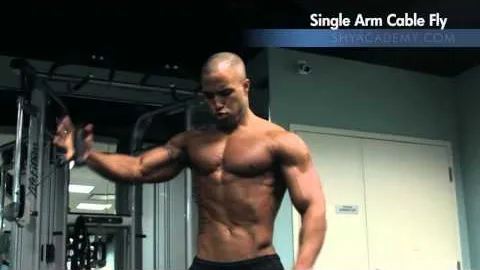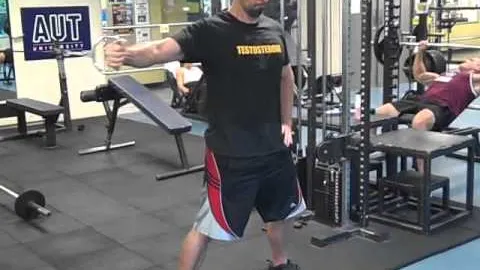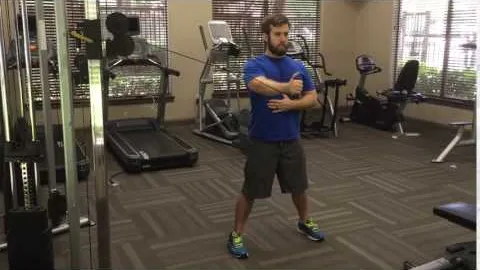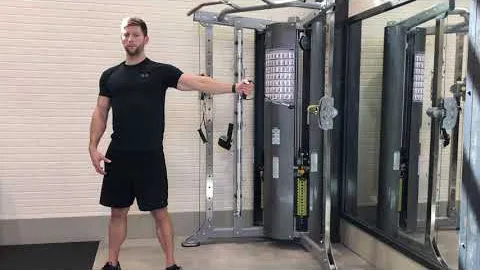




Single Arm Cable Chest Fly Exercise: Targeting Your Pectoral Muscles
The single arm cable chest fly exercise is an effective and versatile movement that targets the pectoral muscles. This exercise can be performed using a cable machine, making it accessible to individuals of all fitness levels. Incorporating this exercise into your workout routine can help improve chest strength and size, enhance upper body muscle balance, and promote better overall upper body stability.
Why Should You Include Single Arm Cable Chest Fly in Your Workout Routine?
The pectoral muscles play a crucial role in the movement and stability of the upper body. Strengthening these muscles can improve your performance in various activities, such as pushing, pulling, and lifting. The single arm cable chest fly exercise specifically targets the pectoral muscles, helping you develop a symmetrical and well-defined chest.
Additionally, compared to traditional chest exercises like the bench press, the single arm cable chest fly exercise provides a more focused and isolated movement. This allows you to specifically target the pectoral muscles without recruiting other muscles excessively. By isolating the pectoral muscles, you can enhance muscle growth and definition in this area.
Proper Form and Technique for Performing Single Arm Cable Chest Fly Exercise
Start by setting the cable machine pulley at chest height. Attach a D-handle to the cable.
Stand sideways to the cable machine, with your arm extended and your feet shoulder-width apart. You should be positioned far enough from the machine to keep tension on the cable throughout the movement.
Grab the D-handle with one hand, keeping your arm slightly bent and your palm facing down. This will be your starting position.
Engage your core and keep your body stable throughout the exercise. Avoid excessive twisting or swaying.
Slowly pull your arm across your body in a sweeping motion until your hand reaches the midline of your chest. Keep your arm slightly bent throughout the movement.
Pause at the end of the movement, feeling the contraction in your pectoral muscles.
Slowly return to the starting position, controlling the movement and keeping tension on the cable.
Repeat for the desired number of repetitions, then switch to the other side.
Tips for Maximizing the Benefits of the Single Arm Cable Chest Fly Exercise
Focus on maintaining tension throughout the movement. Keep a constant pull on the cable, ensuring that your pectoral muscles are engaged throughout the exercise.
Control the movement both on the concentric (pulling) and eccentric (returning) phases. Avoid using momentum and aim for a slow, controlled tempo.
Keep your core braced and your body stable throughout the exercise. This will help isolate the pectoral muscles and reduce the risk of injury.
Experiment with different grip positions and angles to target different areas of your chest. Changing your grip width and hand position can emphasize different parts of the pectoral muscles.
Start with a weight that allows you to perform the exercise with proper form. Avoid using excessive weight, as it may compromise your form and increase the risk of injury.
Incorporating Single Arm Cable Chest Fly into Your Workout Routine
The single arm cable chest fly exercise can be incorporated into your upper body or chest-focused workout routine. Here is an example of how you can include it:
Warm up your upper body with five to ten minutes of light cardio exercises such as jogging or cycling.
Perform two to three sets of compound exercises like push-ups, bench press, or dumbbell chest press to activate your chest muscles.
After completing the compound exercises, move on to the single arm cable chest fly. Perform three to four sets of 8-12 repetitions per side, focusing on maintaining proper form and control throughout the movement.
Finish your workout with stretches targeting the chest and upper body to minimize muscle soreness and promote flexibility.
Safety Precautions and Modifications
Before attempting the single arm cable chest fly exercise, consult with a qualified fitness professional or your healthcare provider, especially if you have any pre-existing medical conditions or injuries.
Start with lighter weight and gradually increase the resistance as you become more comfortable and proficient with the movement.
If you experience any pain or discomfort during the exercise, stop immediately and seek advice from a fitness professional.
If a cable machine is not available, you can modify the exercise using resistance bands or dumbbells to replicate the movement pattern.
Conclusion
The single arm cable chest fly exercise is a valuable addition to any chest-focused workout routine. By targeting the pectoral muscles, this exercise helps develop strength, size, and definition in the chest region. Incorporate this exercise into your workout routine with proper form and technique, and you'll be on your way to building a well-defined and symmetrical chest. Remember to gradually increase the weight and always prioritize safety and proper form during your workouts.
If you're looking for a gym, fitness club or yoga studio, you've come to the right place.
You can find information about gyms in your area. Browse catalog of gyms and find gyms with classes which are you looking for.
On gym page you can find simple information like address, phone or website. You can find list of available classes. You can check availability of personal training or small group classes. On place page you can also see information about open hours.
You can find gyms near you with amenities, courts, studios and equipments.
Use our map to find gym at your city or district.
In Gym Navigator you can find list of exercises with movies for many body parts.
You can browse exercises catalog and find exercises the best of you.
You can also find exercises grouped into workout plans, which you can use to improve you body. Each routine show you exercises one by one and give you possibility to count you progress and count down rest time.